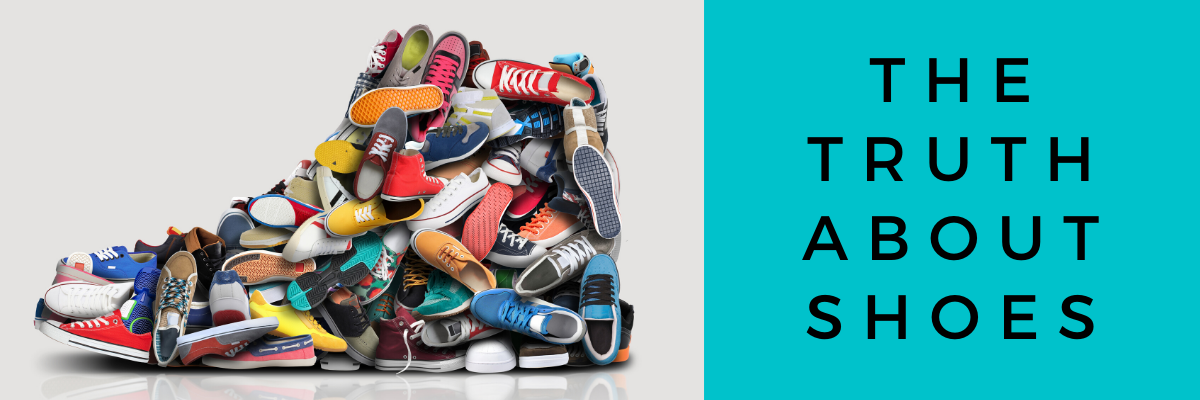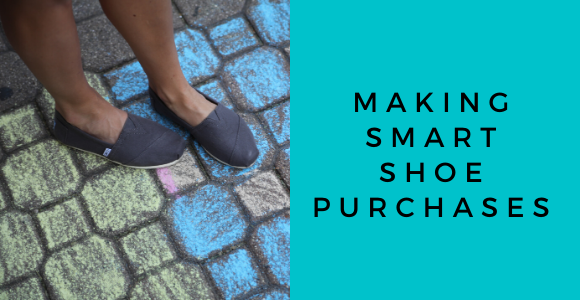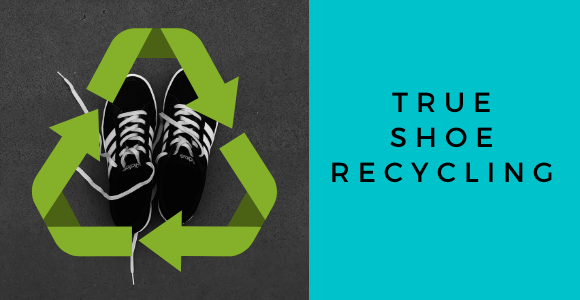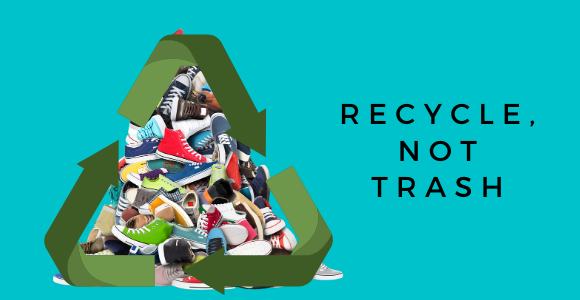 Programs
Programs
The Truth About Shoes

“According to the U.S. Department of the Interior, Americans throw away at least 300 million pairs of shoes each year. These shoes end up in landfills, where they can take 30 to 40 years to decompose.” Read more here.
Here at Chicago Textile Recycling, the majority of our posts and blogs are about textile recycling, which includes any textiles that can be resold as is or recycled into rags or fiber content. When textiles come to mind, most people think of clothes, towels, sheets, etc, but not necessarily shoes. However, CTR does in fact accept paired shoe donations. This blog post will hopefully bring more clarity around shoes we do accept, facts about shoewear and how to handle your shoe purchases and ownership in an environmentally responsible way.

Paired Shoes – Shoes That CTR Accepts
Chicago Textile Recycling does accept paired shoes at their donation bins and partner resale stores. Shoes are a high demand item at CTR, primarily for reuse. If you have shoes that you no longer wear and they are simply sitting in your closet, please donate them. Types of shoes that are in highest demand are sneakers or athletic shoes, followed by leather work shoes and then sandals. Men’s shoes are in higher demand than women’s shoes as men typically own, and thus recycle, fewer pairs of shoes. However, we accept all sizes and most types of paired shoes and would love your donations.

Making Smart Shoe Purchases
When making the choice to purchase new shoes, there are factors to making smart choices about the kind of shoe and amount of shoes that are environmentally responsible. Shoes are needed for different activities, such as:
- flip flops for summer time and time at the beach
- warm boots for winter if you live in a cold climate
- rain boots for living in the city and commuting to work in the spring
- tennis shoes for running and exercising
- dress shoes for work
Various shoes are needed for various reasons, but the problem comes in when shoes are bought and never worn, or worn once, or worn for looks and not for comfort.
Typically women are more renowned for overbuying in the shoe department. “Americans spend $85.6 billion on shoes every year.” (statistic found here) However, this is not always the case. Men also can choose to overbuy, and parents buying for their kids can easily find children shoes too cute not to purchase numerous pairs.
The environmentally responsible thing to do would be to buy shoes on an as needed basis for the variety of purposes they can serve and save the rest of your income for other areas in your life. Even better, as you are shopping for new shoes, purchase a single higher quality versatile shoe rather than several pairs that each only fit one specific purpose. Just as fast fashion makes cheap clothes that don’t last – the same is true with shoes. Quality over quantity is the environmentally friendly choice.
Regularly look through your shoe collection to find any that you do not wear or no longer wear and donate them to CTR or one of our partner resale stores if they are a style of shoe our program accepts.
A final environmentally responsible choice would be to use those shoes that are not easily reusable such as high heels or slippers or flip flops as much as possible so that they are thoroughly loved before they reach their end of life in a landfill. If broken, you could seek repair rather than simply throwing them away. When my husband’s cold weather boots started to split at the bottom, I made a final attempt at the local shoe repair store before finally throwing in the towel. Though not as prevalent as they once were, shoe repair stores can still be found and offer a great alternative in giving shoes a longer life.

True Shoe Recycling
Although there is much in the news about recycling textiles and the numerous companies that are taking that challenge head on, there are not many options for recycling shoes. The biggest way to extend the life of a shoe right now is to donate it for reuse. Much more innovation is needed for shoe recycling to be a legitimate option for shoes you no longer wear.
One recycling program, Nike Grind (reuse a shoe), accepts only athletic shoes for use in Nike Products. This is a good program, but unfortunately, good condition athletic shoes are some of the highest in demand for reuse also, which is what CTR serves to do with our donated shoes. We are still in need of other companies and organizations to take the lead in helping spread awareness about the problems of overbuying and how fast fashion through shoe buying specifically adds to the harm of our planet.

Recycle, Not Trash
It is important to remember to always donate or recycle and not to throw used textiles and shoes in the trash. Right now, the best end to shoes you no longer wear would be to donate them to local resale stores and CTR bins so that they can be reused by others if possible. Allow CTR and resale stores to have the final say of whether a shoe (or textile) is truly at its end of life. Little by little we can create change together.